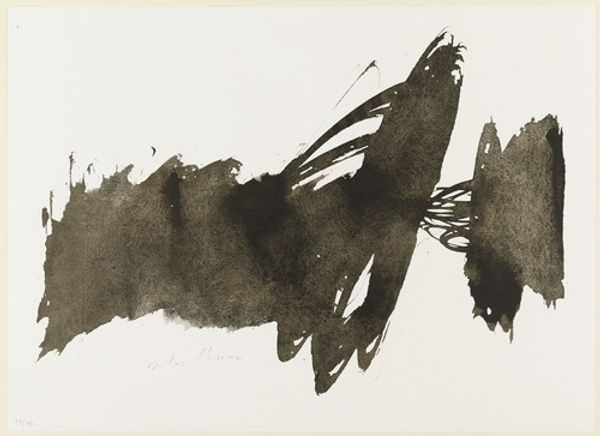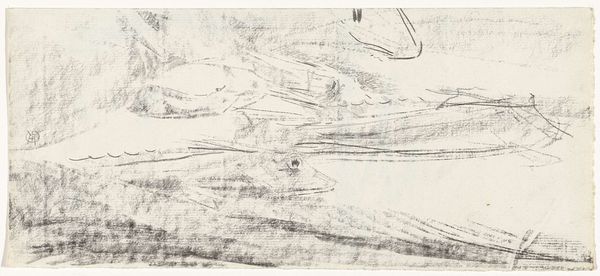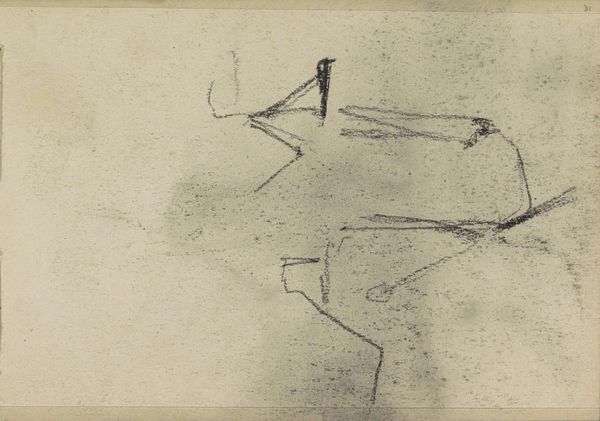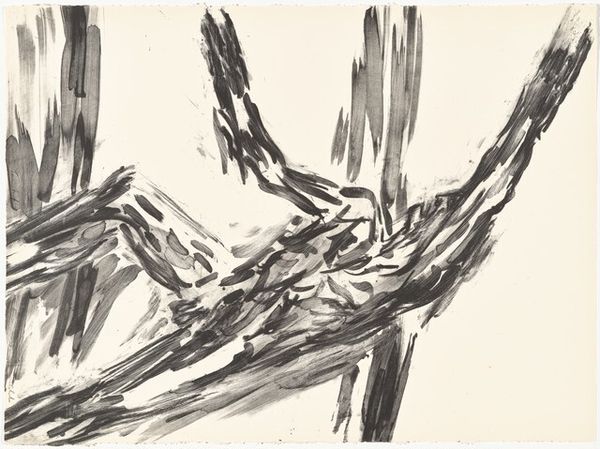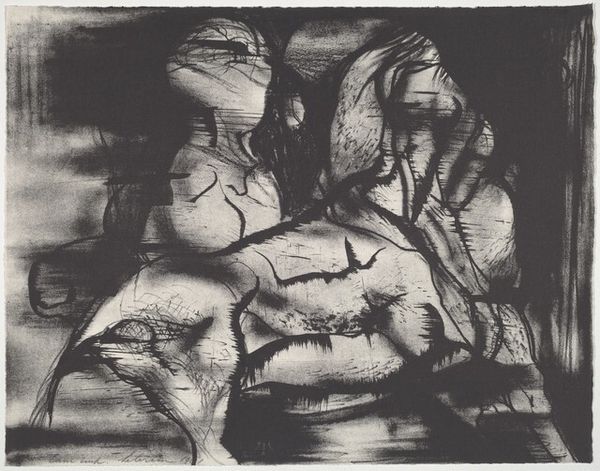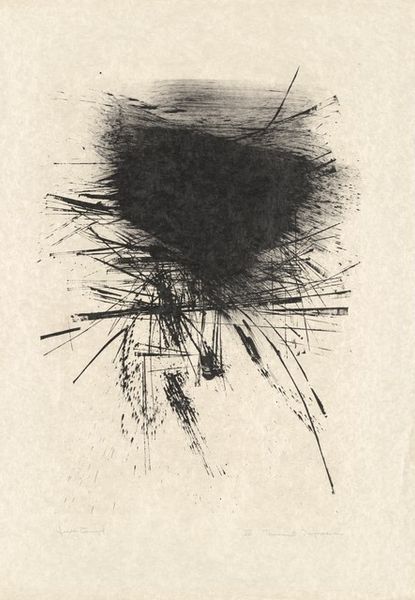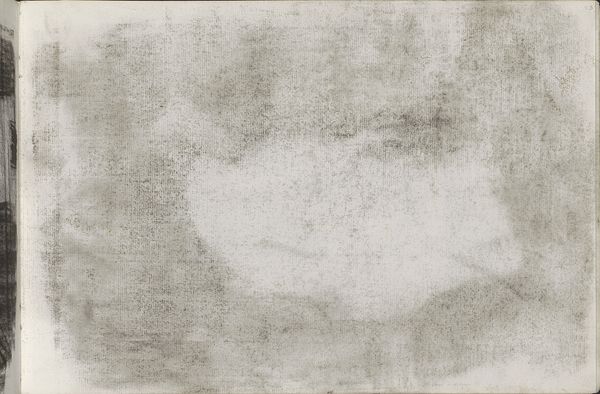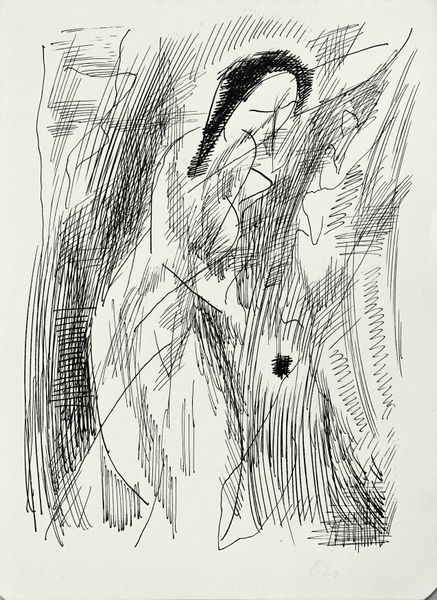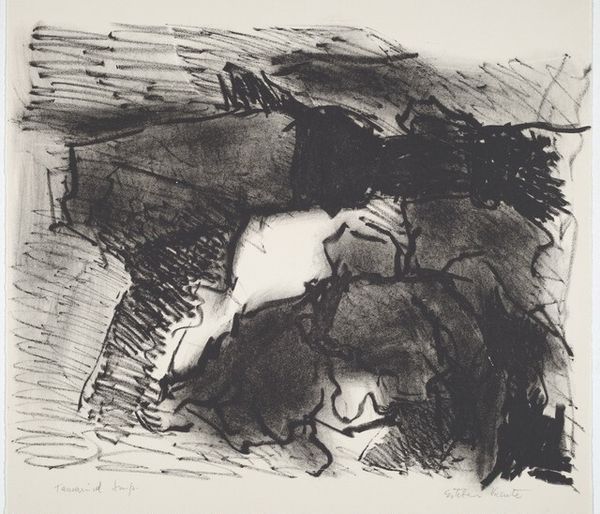
drawing, pencil
#
portrait
#
drawing
#
pencil sketch
#
figuration
#
pencil
#
line
Dimensions: height 158 mm, height 77 mm, width 227 mm
Copyright: Rijks Museum: Open Domain
Curator: Welcome. We're looking at Dirkje Kuik's intriguing pencil drawing, "Twee figuren," created sometime between 1945 and 2005. Editor: My first impression is that the composition feels fragmented. The figures seem almost caught mid-transformation, suspended between reality and abstraction, and rendered very roughly. Curator: Indeed. The rawness of the pencil on paper is crucial here. Kuik's use of line and shading isn't just representational; it emphasizes the act of drawing itself. Consider the availability, cost, and practicality of drawing materials for a working artist like Kuik in postwar Europe. Editor: That makes sense, though I'm equally drawn to the formal tension. The stark contrast between the lightly sketched figure on the left and the more intensely shaded figure on the right creates a powerful visual dynamic. The interplay of light and dark lends depth to an otherwise flat composition. Curator: Precisely. And note how this distribution of light emphasizes social roles or experiences, especially after periods of conflict. Did the means to produce these figures and provide them light and meaning become scarce at a given time for a select few? Editor: Perhaps. Looking at the figures’ attire, though, it’s difficult to ignore how that contextual tension underscores the precarious nature of existence—how social structures can seem so stable yet are fundamentally fragile and drawn only by graphite and hand. The lines are both defined and fragile. Curator: The medium highlights that social and individual fragility, agreed. A pencil sketch, easily erased or smudged, feels so transient when documenting the trauma and rebuilding following wars. And the use of minimal lines could tell us how few means she had in documenting her figures’ visages. Editor: On closer inspection, even the seeming erasure in between these subjects may give meaning to their forms of co-existence. There's a ghostly, ethereal quality evoked, and there is still communication beyond our first look. Curator: Thank you. Dirkje Kuik invites us to see both the product and production when she offers us this social commentary from eras not long past.
Comments
No comments
Be the first to comment and join the conversation on the ultimate creative platform.

